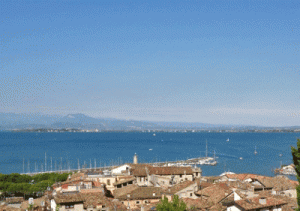Desenzano lake Garda,
the country that gave hospitality to important figures of the past,

TERRITORY OF DESENZANO LAKE GARDA
Fractions: Rivoltella del Garda, San Martino della Battaglia, Vaccarolo
Surrounding municipalities: Lonato del Garda, Padenghe sul Garda, Pozzolengo, Sirmione
Altitude: 67 m s.l.m. – Population: 27.011 – Inhabitants name: desenzanesi
HISTORY OF DESENZANO LAKE GARDA
The territory of Desenzano lake Garda is one of the first places inhabited by man in prehistoric times after the retreat of glaciers; witness the remains of the civilization of Polada discovered in 1873 on the way to Lonato, the prehistoric remains that were unearthed in the excavations of peat are still contained in the mystery despite numerous objects, tools and fossils come to light and maintained at the Ethnographic Museum in Rome, always near Desenzano, between the first century BC and the first century. C. arose a fundus inhabited by a hundred people. Between the second and third centuries originated the “Villa Romana” which is located in the center of Desenzano, the Royal Palace, which was built a long time, Via Gallica. Also at the Royal Palace, to the twelfth century, originally inhabited the country, where a fort was built to defend the population from the barbarian invasions, probably on a pre-existing Roman, the area of Desenzano and Selva Lugana was the scene of different fights. At the beginning of the century the estate belonged to the counts of Sabbioneta as over the course of the century was built the new castle and emphasizes the unity of the diocese of Verona, Christianity arrived in the area of Lake Garda from Verona and this establishes the parish by extending their territories by Lugana to the river Chiese.Nei first decades of the thirteenth century the feud goes through St. Martin, Revolver, Solferino, Castiglione and Medole, under the control of the family Confalonieri, mid-century spreads in these places, between Desenzano and Sirmione, the Cathar heresy by Giovanni di Lugio until 1276, when the Della Scala closed the matter by putting more than a hundred heretics at the stake. In the fifteenth century Desenzano passes under the influence of the Venetian Republic, specifically in the “Riviera di Salò”, soon became the seat of the wheat market and commercial point of reference for the whole lake, Valsabbia and Mantua, and thanks to this the common has considerable economic development, which also results in a significant development with the construction of the Cathedral of St. Mary Magdalene, a school and the restoration of the castle. In the second half of the century clashes between Venice and the other states, Ferrara, Milan, Florence and Naples are also being felt here with the siege of the castle. Il XVI century saw a series of events that shake the tranquility of the country, various looting of mercenaries, the plague, the desire to become independent from the Republic of Venice and the “Riviera di Salò” and some disagreements with the Holy See, then resolved through the financing of enlargement of the cathedral by some desenzanesi. During the seventeenth century it was restructured the castle, repaired the clock in the square, the port expanded and there has been a considerable building with a break during the plague of 1630. At the beginning of the eighteenth, in the war of the Spanish Succession, the Austrian imperial troops and the French one pass and fought on these lands looted several villages and Venice, which had declared itself neutral, only later sends militia to protect the area of the lake. Towards the end of the century Desenzano role changes several times, is part of the Republic of Brescia, became the seat of the Department of Benaco and is part of the Department of Mella, at the end of the century, however, with the army of Napoleon, back part of the Cisalpine Republic, a period when you perform certain public works such as the pier and the transformation to the theater of the church of the Carmelites. In the nineteenth century fell under the control of the Austrians, being part of the Kingdom of Lombardy-Venetia in 1815 becomes common first class and is visited by Emperor Francis I of Austria. In 1859, Desenzano is also involved in the Battle of Solferino and San Martino, like other countries, some of the wounded. The twentieth century saw the opening of the railway line between the station and the port and the steam line Desenzano – Castiglione, who was part of the Italy – Mantua, then both discharged.
